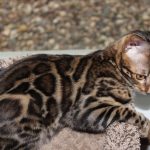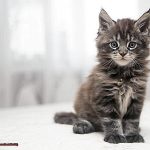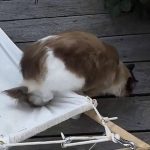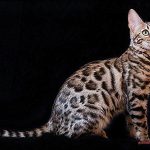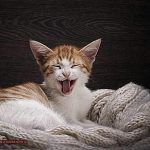Cats, those captivating creatures that have bewitched us for centuries, never fail to surprise and amuse. From their elegant saunters to their gravity-defying acrobatics, cats possess an uncanny ability to seize our attention and ignite fits of laughter. But what lies beneath those uproarious 5 minutes of pure feline madness that so many cat owners witness?
If you’ve ever had the privilege of witnessing a cat partake in what can only be described as an energetic frenzy, then you’re no stranger to these unpredictable bursts of insanity. Cats dashing from one room to another, soaring through the air with boundless enthusiasm, and playfully pouncing on invisible foes provide endless amusement. But what ignites this sudden surge of energy?
To comprehend why cats experience these comical 5 minutes, we must delve into their innate instincts and predatory nature. Cats are wired with an instinctual drive to hunt, which manifests itself in various situations. These instincts serve to maintain their agility, razor-sharp reflexes, and overall physical prowess.
So stick around as we unravel the enigma behind these entertaining episodes and explore the underlying factors that contribute to these outbursts of feline hilarity. Whether you’re a proud guardian of a furry companion or simply infatuated with our whiskered friends, this blog post will shed light on the peculiar behavior that makes cats endlessly amusing. Prepare yourself for amusement and enlightenment as we embark on this whimsical journey into the world of our feline companions.
Why do cats have funny 5 minutes
If you’ve ever witnessed your cat suddenly going into hyper-drive, zooming around the house, and engaging in playful antics, then you know exactly what we’re talking about. But why do cats have these hilarious bursts of energy? Let’s find out.
- Evolutionary Instincts: Our cats may be domesticated now, but deep down, they still have the heart of a wild hunter. These funny 5 minutes could be remnants of their ancestors’ hunting instincts. Just imagine your kitty pretending they’re stalking prey in the savannah. Running, jumping, pouncing, and chasing are all part of a cat’s natural hunting behaviors. So when they go crazy for a few minutes, they’re just practicing their hunting skills and keeping fit.
- Burning Off Energy: Cats are active creatures who need plenty of exercise to stay healthy and happy. But when they spend most of their time indoors, they can get a bit stir-crazy. That’s where the funny 5 minutes come in handy. It’s their way of releasing pent-up energy and saying, “Hey, I need to move my paws.” So when your kitty starts zooming around like a racecar driver, it’s just them getting rid of all that built-up energy. It’s like their own little workout session.
- Time of Day: Have you noticed that these hilarious episodes tend to happen at certain times of the day? Well, there’s a reason for that. Cats are crepuscular creatures, which means they’re most active during dawn and dusk. So it’s no surprise that their funny 5 minutes often occur in the evening or early morning. It’s like they’re saying, “Good morning to you too.” or “I’m ready to party.” during their prime activity hours.
- Environmental Triggers: Sometimes, it’s the little things that set off our cats’ funny 5 minutes. Changes in their environment, like rearranging furniture or introducing new toys, can stimulate their curiosity and trigger their playful instincts. Even simple sounds or movements can pique their interest and send them into a frenzy of fun. So keep an eye out for what triggers your cat’s funny 5 minutes and give them plenty of stimulating toys and activities to keep their curiosity satisfied.
The Possible Explanations Behind Cats’ Funny 5 Minutes
Have you ever witnessed your cat’s sudden burst of energy, where they go from lazy to crazy in a matter of seconds? These funny 5 minutes, also known as “zoomies,” are a common and entertaining behavior observed in cats of all ages and breeds. In this section, we will explore the possible explanations behind these comical episodes.
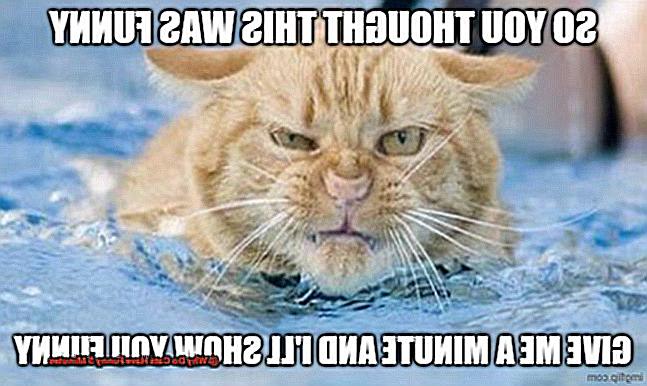
Fulfilling Predatory Instincts:
Cats are natural hunters, and their funny 5 minutes may be a manifestation of their instinctual need to hunt and play. During these bursts of energy, cats engage in vigorous movements that mimic hunting behaviors such as pouncing, chasing, and swatting. It’s their way of fulfilling their predatory instincts in a safe and playful manner.
Releasing Pent-up Energy:
Despite being known for their laid-back demeanor, cats still have energy that needs to be expended. These short bursts of activity allow them to release pent-up energy and relieve stress. Think of it as their version of a quick workout session or a stress-relieving break.
Hormonal Influence:
Hormones can also contribute to cats’ funny 5 minutes. Male cats, especially those who are not neutered, may experience heightened levels of testosterone, which can lead to increased playfulness and hyperactivity. Neutering male cats can help regulate their hormones and reduce the intensity of these episodes.
Environmental Triggers:
Environmental factors can trigger cats’ funny 5 minutes. Changes in the household routine, introduction of new toys or objects, or the presence of other animals can excite and stimulate cats, leading to these bursts of energy. It’s their way of expressing excitement and adapting to new stimuli.
It’s important to note that while these episodes are generally harmless and normal, excessive or prolonged periods of hyperactivity may indicate underlying health issues or behavioral problems. If you’re concerned about your cat’s behavior, it’s advisable to consult with a veterinarian.
To help manage your cat’s energetic outbursts, provide plenty of interactive toys, scratching posts, and playtime. Regular exercise and mental stimulation can help prevent excessive pent-up energy that may result in more frequent or intense funny 5-minute episodes.
Instinctual Behavior Inherited from Wild Ancestors
Have you ever witnessed your cat suddenly transform into a streak of lightning, zooming around the house with boundless energy and a mischievous glint in their eyes? You’re not alone. Many cat owners have experienced this phenomenon known as the “funny 5 minutes.” But have you ever wondered why your cat behaves this way? Well, buckle up, because we’re about to take a journey into the wild world of feline instincts.
Ancestral Roots: Descendants of Wild Hunters
Cats, including our beloved domestic feline friends, share a common ancestry with wild hunters such as the African wildcat. These ancestors were solitary hunters who relied on bursts of energy and agility to catch their prey.
Mimicking the Hunt: Stalking and Pouncing
During their “funny 5 minutes,” cats often exhibit behaviors that mimic their wild ancestors’ hunting techniques. They may crouch low to the ground, stalk imaginary prey, and pounce with lightning speed. This instinctual behavior is deeply ingrained in their DNA and serves as a way for them to hone their hunting skills.
Releasing Energy and Maintaining Fitness
The “funny 5 minutes” behavior serves multiple purposes for cats. It helps them release excess energy and maintain their physical fitness. Just like their wild ancestors, domestic cats need bursts of activity to stay in optimal shape.
Mental Stimulation and Enrichment

For indoor cats who may not have access to outdoor hunting opportunities, these episodes of wild energy also provide much-needed mental stimulation and enrichment. Engaging in these playful behaviors satisfies their natural hunting instincts and keeps their minds sharp.
Environment and Triggers
The triggers for the “funny 5 minutes” behavior can vary from cat to cat. It could be a change in the environment, the presence of prey-like objects such as toys, or simply pent-up energy that needs to be released. As a cat owner, it’s essential to provide outlets for this instinctual behavior by offering plenty of toys, interactive play sessions, and opportunities for exploration and exercise.
Balancing Act: Monitoring and Managing
While the “funny 5 minutes” behavior is generally harmless and a normal part of a cat’s behavior, it’s important to monitor your cat for any signs of distress or aggression during these episodes. Excessive hyperactivity may indicate underlying health issues or behavioral problems. Regular exercise and mental stimulation are crucial for managing your cat’s “funny 5 minutes” and ensuring their overall well-being.
Role of Hormones in Cat’s Funny 5 Minutes
Get ready to witness the wild side of your beloved feline friend as we explore the fascinating role of hormones in their funny 5 minutes. Strap in, cat lovers, because this is going to be a thrilling ride.
Adrenaline: The Catalyst for the “Zoomies”
Picture this: your cat suddenly darts across the room, climbs up the curtains, and launches themselves onto the nearest piece of furniture. What’s behind this burst of energy? Adrenaline. This stress hormone, released by the adrenal glands, triggers the infamous “zoomies” in cats. It’s like their own personal rollercoaster ride.
Dopamine: The Pleasure Boost
Ever wondered why your cat seems to be having the time of their life during these energetic escapades? That’s where dopamine comes into play. This neurotransmitter is responsible for pleasure and reward in the brain. When your cat engages in play or experiences excitement, dopamine floods their brain, creating feelings of sheer delight and satisfaction. It’s like winning the lottery for them.
Testosterone and Estrogen: The Hormonal Dance
Testosterone and estrogen, the sex hormones, can influence a cat’s funny 5 minutes. During mating seasons, male cats may become more active and assertive, while females may show restlessness and increased playfulness. It’s like their bodies are in sync with nature, urging them to find a mate and continue their lineage.
Factors at Play
Just like us humans, not all cats are created equal when it comes to these energetic episodes. Age, breed, individual temperament, and overall health can influence the frequency and intensity of funny 5 minutes. Some cats may have occasional bursts of energy that last a few minutes, while others may engage in extended play sessions that seem never-ending.
Managing the Madness
Now that you understand the biology behind these funny 5 minutes, it’s time to channel that energy in a positive way. Interactive play sessions and environmental enrichment can be a game-changer for your cat. Engage in play with toys that mimic prey, encouraging their natural hunting instincts while providing an appropriate outlet for their energy. It’s a win-win situation.
Environmental Factors that Trigger These Episodes
We’ve all witnessed it – our furry friends suddenly morphing into acrobatic superheroes, zooming around the house like lightning bolts. But what exactly triggers these hilarious episodes? Let’s dive into the world of environmental factors and see what makes our cats go wild.
- Stimulating Environment: Cats are curious creatures, and they thrive in environments that provide mental and physical stimulation. A lack of stimulation can lead to boredom, which may result in pent-up energy being released through these bursts of activity.
- Prey outside the window: Cats are natural hunters, and the sight or sound of potential prey can instantly activate their playful behavior. So, if you have birds or squirrels frolicking outside your window, get ready for some epic zoomies.
- Changes in the environment: Cats are creatures of habit, and any sudden changes in their surroundings can excite their curiosity and prompt them to engage in playful behavior. So, if you rearrange your furniture or introduce new objects or toys, be prepared for a full-blown kitty circus.
- Interactive toys and playtime: Cats need regular mental and physical stimulation to keep them happy and healthy. Providing them with interactive toys that mimic prey or engaging in play sessions with their owners can help channel their energy and prevent those funny 5 minutes from turning into destructive moments.
- Time of day: Cats are crepuscular animals, meaning they are most active during dawn and dusk. These periods align with their natural hunting instincts, so don’t be surprised if your cat decides to turn your living room into a race track during those hours.
- Temperature and humidity: Cats tend to be more active in cooler temperatures because excessive heat can make them feel lethargic. Similarly, high humidity levels can make them feel uncomfortable and less inclined to engage in playful behavior. So, make sure to keep the temperature just right for your feline friend’s epic play sessions.
- Health and well-being: A happy and healthy cat is more likely to exhibit normal playful behavior. Cats experiencing physical discomfort or underlying health issues may display changes in behavior, including increased or decreased activity levels. So, always keep an eye out for any signs of illness or discomfort in your furry friend.
Distinguishing Aggression from Playful Behavior
Have you ever watched your cat zoom around the house, leaping off furniture, and engaging in wild play behavior? It’s no secret that cats can have their “funny 5 minutes” where they exhibit bursts of energy and engage in playful antics. But how can we tell if their behavior is simply playful or if it crosses the line into aggression? Let’s explore some key differences between the two.
Body Language:
When trying to distinguish between playful behavior and aggression, it’s important to pay attention to your cat’s body language. Playful cats tend to have a relaxed posture, with their tails held high or gently swaying back and forth. Their ears are usually forward or slightly tilted, indicating curiosity and engagement. On the other hand, aggressive cats display tense body language, with ears pinned back, tails flicking rapidly, and fur standing on end.
Intensity of Actions:
The intensity of the behavior is another crucial factor to consider. Playful cats generally engage in less forceful actions, such as light biting or gentle swatting. They may also take short breaks between play bouts to rest and recuperate. In contrast, aggressive cats often exhibit more intense actions, such as hard biting or forceful scratching. They may persistently pursue their target without showing signs of fatigue.
Combination of Behaviors:
Sometimes cats can display a combination of both playful and aggressive behaviors during their “funny 5 minutes.” This can make it more challenging to differentiate between the two. In such cases, closely monitoring the cat’s body language and observing for any escalation of aggressive behavior becomes crucial. If the playful behavior starts to become rough or intense, it is advisable to intervene and redirect the cat’s attention to more appropriate toys or activities.
Remember, understanding the difference between playful behavior and aggression in cats is essential for their well-being and maintaining a harmonious environment. By observing their body language, intensity of actions, and the context in which the behavior occurs, we can better distinguish between the two. If you have concerns about your cat’s behavior, it’s always best to seek professional advice as experts can provide tailored guidance and solutions to address any issues effectively.
How to Encourage Cats’ Healthy Playtime Habits
Playtime is not just fun for cats: it’s an essential part of their well-being. Just like humans need exercise, cats need play to keep them happy and healthy. In this article, we’ll explore how you can encourage your cat’s healthy playtime habits and provide them with a stimulating and enriching environment.
The Importance of Play:
Playtime is more than just a way for cats to pass the time. It helps them release energy, exercise their muscles, and stimulate their minds. Regular play sessions can prevent behavioral issues like aggression or destructive behavior.
Choosing the Right Toys:
Cats have different play styles, so it’s important to provide a variety of toys that cater to their preferences. Some cats enjoy interactive toys they can chase or pounce on, while others prefer toys that mimic prey objects like feathers or mice. Rotate toys regularly to keep your cat engaged and prevent boredom.
Establishing a Play Routine:
Schedule regular play sessions with your cat to establish a routine. This not only helps them burn off excess energy but also strengthens the bond between you and your furry friend. Try to make playtime a consistent part of their day.
Positive Reinforcement:
During playtime, use positive reinforcement techniques to encourage appropriate play behavior. Praise and reward your cat with treats or affection when they engage in healthy play behaviors. This will reinforce positive associations with playtime.
Interactive Play:
Engage in interactive play with your cat using wand toys or laser pointers. These toys mimic prey movements, triggering your cat’s hunting instincts and providing them with mental and physical stimulation.
Creating a Playful Environment:
Provide scratching posts, climbing trees, and hiding spots to create an enriching environment for your cat. These additions encourage natural behaviors and offer opportunities for play. Consider introducing puzzle toys or treat dispensers to stimulate their mental abilities during playtime.
Tips for Reducing Stress and Anxiety During Playtime
These episodes, often referred to as “funny 5 minutes,” are a common behavior in cats. But why do cats have these funny moments? Let’s explore some possible explanations.
One theory suggests that these bursts of energy are a way for cats to release pent-up energy. Cats are naturally active animals, and when they spend most of their time indoors, they may not have enough opportunities to engage in physical exercise. These short bursts of intense activity allow them to burn off some of that excess energy and alleviate boredom.
Another possible explanation is that these funny 5 minutes are an instinctual behavior inherited from their wild ancestors. In the wild, cats had to hunt for their food, and these sudden bursts of energy could have been a way for them to practice their hunting skills. Even though domestic cats are provided with regular meals, this instinctual behavior may still be present in their genetic makeup.
Hormones also play a role in these funny 5 minutes. Cats experience hormonal fluctuations throughout the day, and these can influence their behavior. During the evening hours, cats may experience a surge in hormones that can make them more playful and energetic.
Environmental factors can also trigger these episodes. Changes in the environment, such as rearranging furniture or introducing new objects or scents into the house, can stimulate a cat’s curiosity and trigger their playful instincts. Additionally, certain sounds or movements can pique a cat’s interest and prompt them to engage in these playful behaviors.
It’s important to note that while these funny 5 minutes may be entertaining to watch, they should not be confused with aggression or anxiety-driven behavior. It is normal for cats to have bursts of energy and engage in playful activities. However, if a cat’s behavior becomes consistently aggressive or if they show signs of distress during these episodes, it is advisable to consult with a veterinarian to rule out any underlying medical or behavioral issues.
How to Keep Your Cat Safe During Playtime
Playtime is an essential part of your cat’s daily routine. Not only does it provide them with physical exercise, but it also stimulates their minds and keeps them entertained. However, it’s crucial to prioritize your cat’s safety during playtime to prevent any accidents or injuries. Here are some tips on how to create a safe and stimulating environment for your cat during playtime:
Clear the Play Area
Before you start playtime with your cat, make sure to remove any potential hazards from the play area. This includes small objects that can be swallowed, fragile items that can be broken, and toxic plants that can be harmful if ingested. Also, check for open windows or doors that your cat could escape through during their energetic moments.
Choose Safe Toys
When selecting toys for your cat, opt for ones that are specifically designed for feline play. Avoid toys with small parts that can be easily chewed off and swallowed. Instead, choose interactive toys like wand toys, puzzle toys, or treat-dispensing toys that engage your cat’s hunting instincts and provide mental stimulation.
Monitor Behavior
During playtime, keep an eye on your cat’s behavior and body language. If you notice signs of aggression, such as growling or hissing, it’s best to stop the play session and give your cat some time to calm down. Overstimulation can lead to accidents or injuries, so it’s crucial to recognize when your cat needs a break.
Use Positive Reinforcement
Instead of using your hands as toys, use interactive toys or scratching posts to redirect your cat’s energy. Reward your cat with treats or praise when they exhibit appropriate play behavior, such as using their claws on appropriate surfaces or engaging with their toys. This will help reinforce positive play habits and discourage biting or scratching behavior.
Provide Regular Exercise
Engage in play sessions with your cat at least twice a day, ensuring that each session lasts for around 10-15 minutes. This will help expel your cat’s excess energy and reduce the likelihood of them becoming overly excited during playtime.
Additionally, provide your cat with other forms of exercise, such as interactive toys or puzzle feeders, to keep them mentally and physically stimulated throughout the day.
Also Read: Do Cats Get Clingy When Youre Sick
Conclusion
Cats are known for their unpredictable bursts of energy, often referred to as “funny 5 minutes.” These moments can seem strange and amusing to us humans, but they actually serve important purposes for our feline friends. During these episodes, cats engage in intense play behavior, displaying impressive acrobatics and lightning-fast movements. It’s like they have tapped into a hidden wellspring of energy that must be released.
These funny 5 minutes are thought to be a way for cats to release pent-up energy and express their natural hunting instincts. Even though our domesticated cats may not need to hunt for survival, their instincts remain deeply ingrained. These short bursts of frenzied activity allow them to simulate the thrill of the chase and capture prey, even if it’s just a toy mouse or a ball of yarn.
Watching a cat during its funny 5 minutes is like witnessing a mini circus performance. They leap through the air with grace and agility, pounce on imaginary prey with precision, and dart around the room as if being chased by an invisible predator. It’s both entertaining and awe-inspiring to witness their physical prowess in action.
But these episodes aren’t just about fun and games. They also serve as a form of exercise for our feline companions. Cats are naturally agile creatures that require regular physical activity to maintain their overall health and well-being. The intense bursts of play during their funny 5 minutes help them burn off excess energy, keeping them physically fit and mentally stimulated.
In addition to providing exercise, these playful moments also offer stress relief for cats. Just like humans, cats can experience stress or anxiety from various factors in their environment. Engaging in vigorous play allows them to release tension and reduce any built-up anxiety they may be feeling.
So next time you see your cat zooming around the house during its funny 5 minutes, take a moment to appreciate the purpose behind this seemingly silly behavior. It’s their way of staying fit, expressing their natural instincts, and finding joy in the simple act of play.
